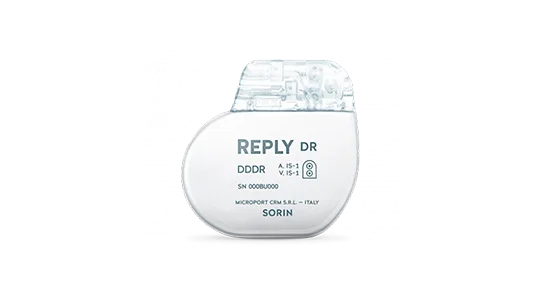REPLY
A pacemaker family inspired by nature. Natural intelligence.
The world’s smallest dual-chamber pacemaker with no compromise on longevity.1–3
Reply DR includes SafeR, the only AV management algorithm proven to be effective and safe for all of your patients with bradycardia.1, 4
12 years longevity in only 8 cc.
The world’s smallest dual-chamber pacemaker with no compromise on longevity.1–3



